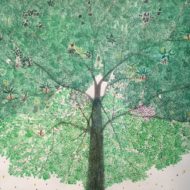Earlier this month I was pleased to receive an invitation from the Centre for Research in the Arts, Social Sciences and Humanities (CRASSH) at the University of Cambridge to contribute to a workshop called ‘How Can Public Interest Journalism Hold Algorithms to Account?’.
Nick Diakopoulos from the University of Maryland gave an interesting talk on algorithmic accountability and computational journalism and Jonathan Gray and I gave a preview of the Public Data Lab’s A Field Guide to Fake News, to be launched next month at the International Journalism Festival in Italy.
The field guide is a collection of recipes to trace the production, circulation and responses to fake news online. Its production is supported by the First Draft Coalition. The aim is to suggest different ways of mapping and responding to fake news beyond identifying and fact-checking suspect claims – including “thicker” accounts of circulation as a way to develop a richer understanding of how fake news moves and mobilises people, more nuanced accounts of what fake news is, and responses which are better attuned to the phenomenon.
For the purposes of this presentation, we organised the empirical work in the guide into four propositions for the study of fake news. The first proposition is that we are not dealing with an unitary fake news phenomenon but with different shades of fakeness. We illustrated this with a case study from the field guide on Russian information campaigning online. The second proposition we made in this talk is that false knowledge claims are not born fake news and that it is through circulation that they become fake news and thus they are inseparable from the publics, platforms and infrastructures that make them possible. We supported this point with another case study from the guide exploring the circulation of fake news online. The third point we made is that successful fabrications are not limited to the “news” format. In fact different formats perform well on different platforms. This was illustrated with the example of memes as vectors of post-truth politics on Facebook, also developed in one of the field guide chapters. Finally we pointed to the fact that the difference between ‘real’ and ‘fake’ news not just about claims being made but that they are underpinned by different production histories – which should also be studied. Here we discussed a chapter on the technicity of fake news from the field guide.
The slides from this talk can be found on SlideShare.
